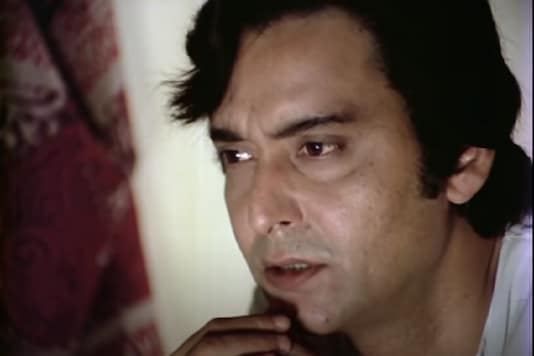While recounting an anecdote during his pre-Feluda days when he graced the Sourav Ganguly hosted quiz show 'Dadagiri Unlimited' close to a decade ago, Soumitra Chatterjee had said, "I was ecstatic that I could be a part of a film that is made solely for the kishor (children)... we don't make many of those in Bengali cinema for the children. "
Soumitra Chatterjee was the face of Satyajit Ray's Feluda for children across generations.
Ray was a multitude of talent rolled into one person and sketching illustrations of his characters was something the filmmaker often indulged in. Chatterjee had once asked the filmmaker whether he had kept himself in mind when he sketched the character of Feluda. Ray, he had said, quipped back, "Why do people tell me I do it keeping you in mind?"
For a regular 1990s born kid in a Bengali household, growing up in Kolkata (erstwhile Calcutta) included frequent summer trips to mamabari (maternal uncles' place) in Bandel, a town some 40-50 kms from the city. It was here that a full house inclusive of dadai-dida (maternal grandparents) two uncles, their wives, and my mother and I would sit down in front of the television set after lunch. The occasional tussle regarding settling for a particular channel often used to take a breather when DD Bangla or Zee Bangla aired the old and black and white Bengali classics.
The Uttam Kumar-Suchitra Sen sagas were a regular feature, considering dida-dadai were enormous admirers, something a 10-12-year-old was yet not accustomed to watching. But that changed when 'Sonar Kella' aired. Transcending across generations, the Ray masterpiece was enjoyed by all and sundry. The feature film had all of us sitting with rapt attention glued to the TV set instead of giving in to the pleasure of 'bhaat ghum'( the Bengali term for afternoon nap especially after a plateful of rice and fish for lunch). The film was special in more ways than one because apart from children's storybooks in English or Bengali, this was one of the first offerings from the visual medium that had me and thousands of other Bengali kids hooked.
Feluda was a cultural hero, a utopian character and for a 10-12-year-old, he was only describable as the 'best thing'. The film's allure was its suspense, its characters, the thrill and the wonderful locales of Jaisalmer, not to forget the idiosyncrasies and humour of Jatayu and the youthful energy of Topshe (Tapesh). And with Chatterjee's iconic portrayal of the character with his smart, sharp and thinking man's gait and the deadpan sarcasm-- he became synonymous with Feluda.
While Chatterjee was the first actor to portray Feluda, his shoes were to a large extent filled by Sabyasachi Chakraborty, another Bengali stalwart. Chakraborty took on the mantle of the smart sleuth in 1996 with Baksho Rohoshyo, a part of TV films directed by Sandip Ray, filmmaker and Satyajit Ray's son. Chakraborty has ended up playing the character on screen many more times than Chatterjee, who only did it for Sonar Kella and Joy Baba Felunath.
Looking back at Chatterjee's two Feluda films, what brought on the partiality towards the Ray-made detective films is not for one particular reason. For one, it could be that it was simply because it was made by the maestro himself. It was also perhaps because of the children's characters in both the films, Mukul and Captain Spark, the grandson of the Ghoshal family. Another reason could be because of the setting--a simple town of Benaras and Jaisalmer of the yore. But it was also and to a large extent the allure of going back to the golden old phase that resonated more and Soumitra Chatterjee's original raw authenticity in portraying the character.
Reminiscing the film decades later, Chatterjee has himself mentioned how he felt Joy Baba Felunath was the better film of the two, a beautifully told story canvassed on a wonderful colour palette, showcasing the ghats of Benaras and the simple joys of growing up a small town offered. His Feluda also had a staid, somber bearing and relied on ‘'mogojastro' (brain-weapon), as he elaborates in the film. There were also little details to the character Chatterjee brought along with him, like the ice-cold mannerism while dealing with Maganlal Meghraj to his enlightening interactions with Lalmohan Babu and Topshe, which often were results of hilarious gaffes.
Today as Bengal mourns together on the loss of the last man of the Golden era of celluloid, as someone who went above and beyond the Ray films and firmly established himself as a doyen of world cinema by giving shape to his mentor's filmmaking vision, Chatterjee is beyond petty regionalism and Bengali culture. His legacy is definitely going to include the ease with which his craft evolved and transcended across varied ages of Bengali cinema as he continued to work with new-age directors and younger co-stars.
The man was an institution in himself, an assimilation of all things Bengali. And his Feluda, a fitting portrayal of a memorable character that continues to inspire artists, filmmakers and aspects of socio-culture to carry on in its wake. For a generation of Bengali children, reading and watching Feluda was definitely ahead of Poirot and Holmes. And as I near the end of my humble attempt of a tribute, a shot of painful nostalgia punches in the gut. For this Feluda fan at least, Chatterjee’s Charminaar-smoking lanky sleuth will always be numero-uno. That’s a promise.

